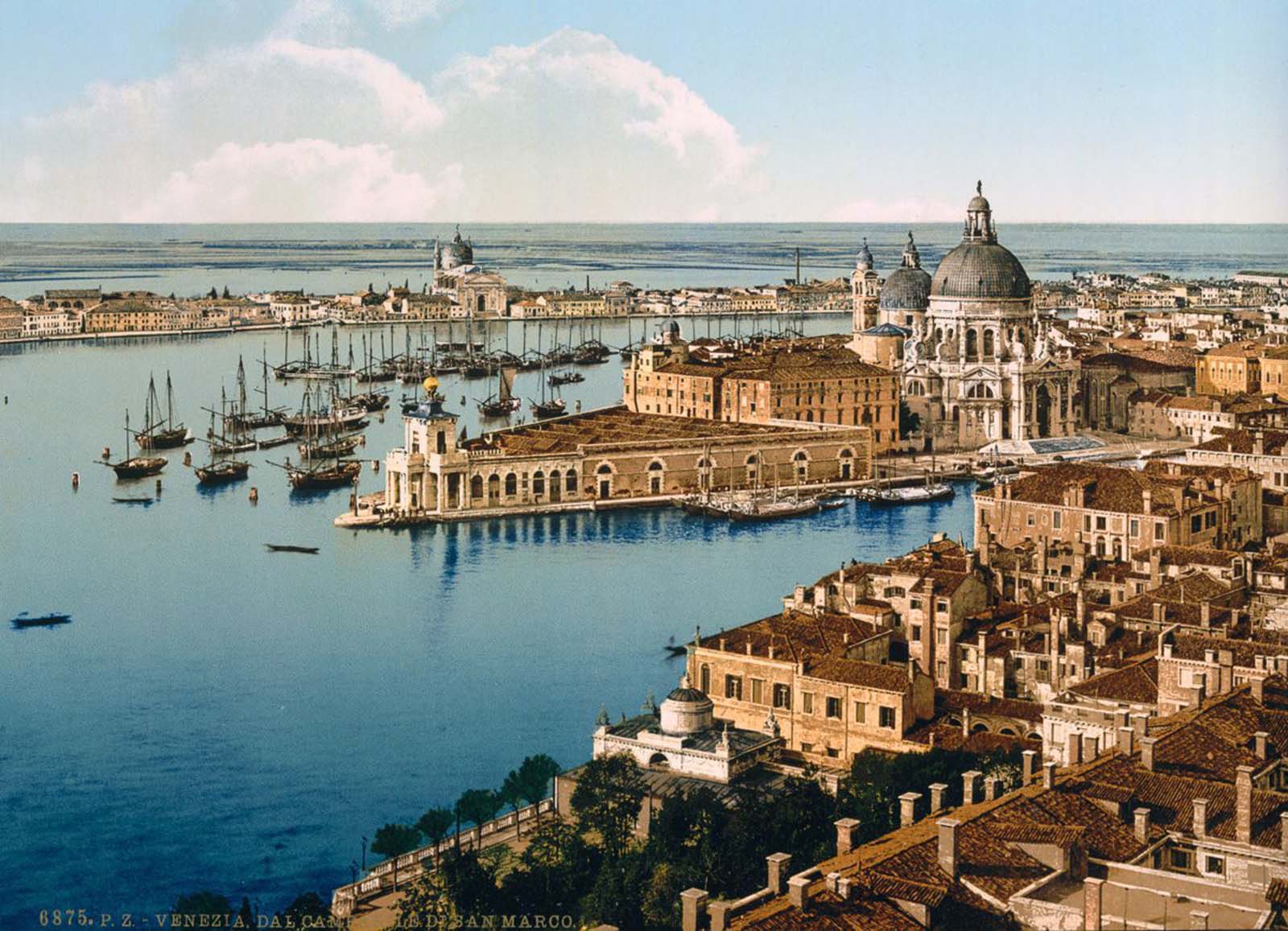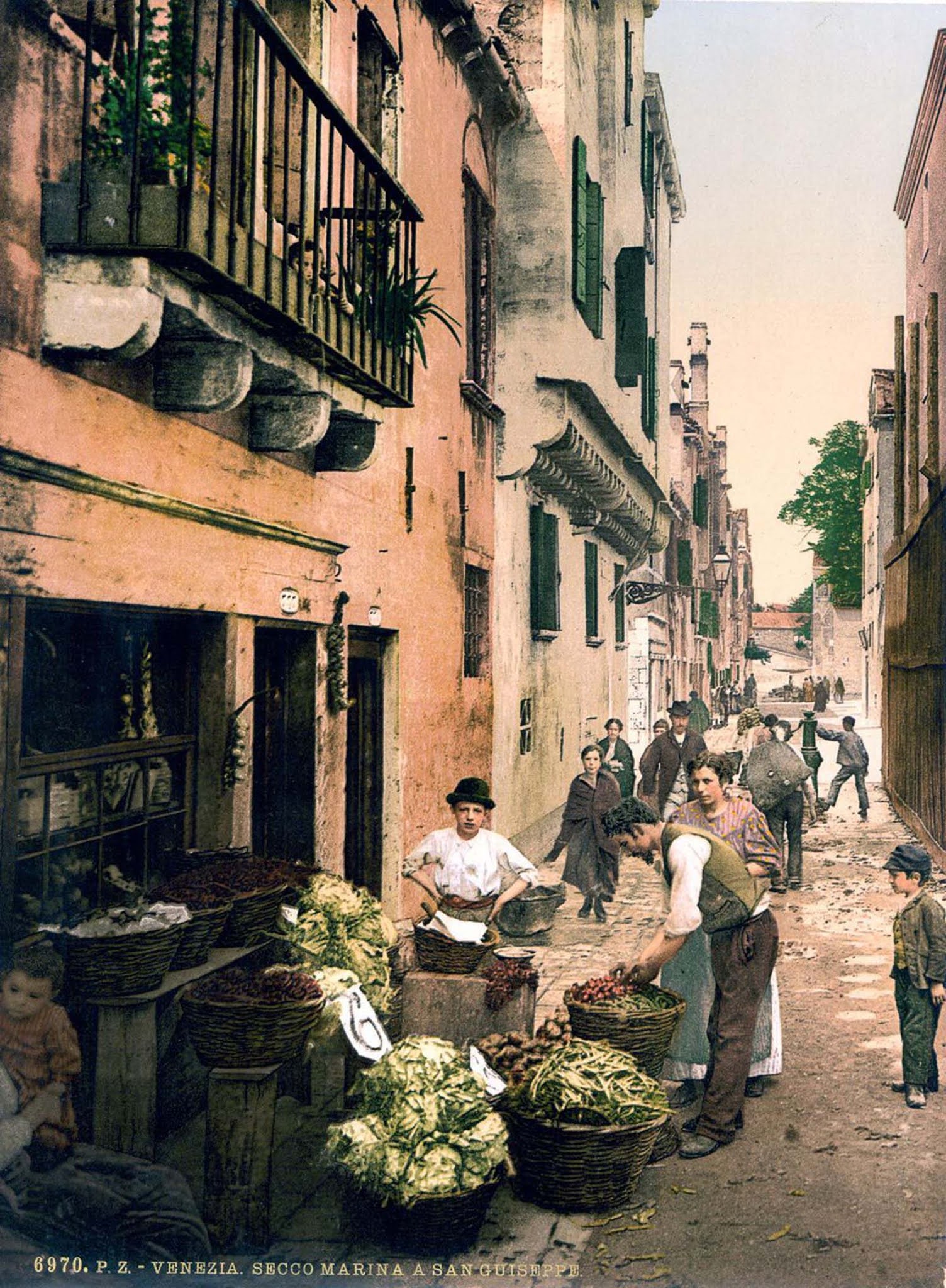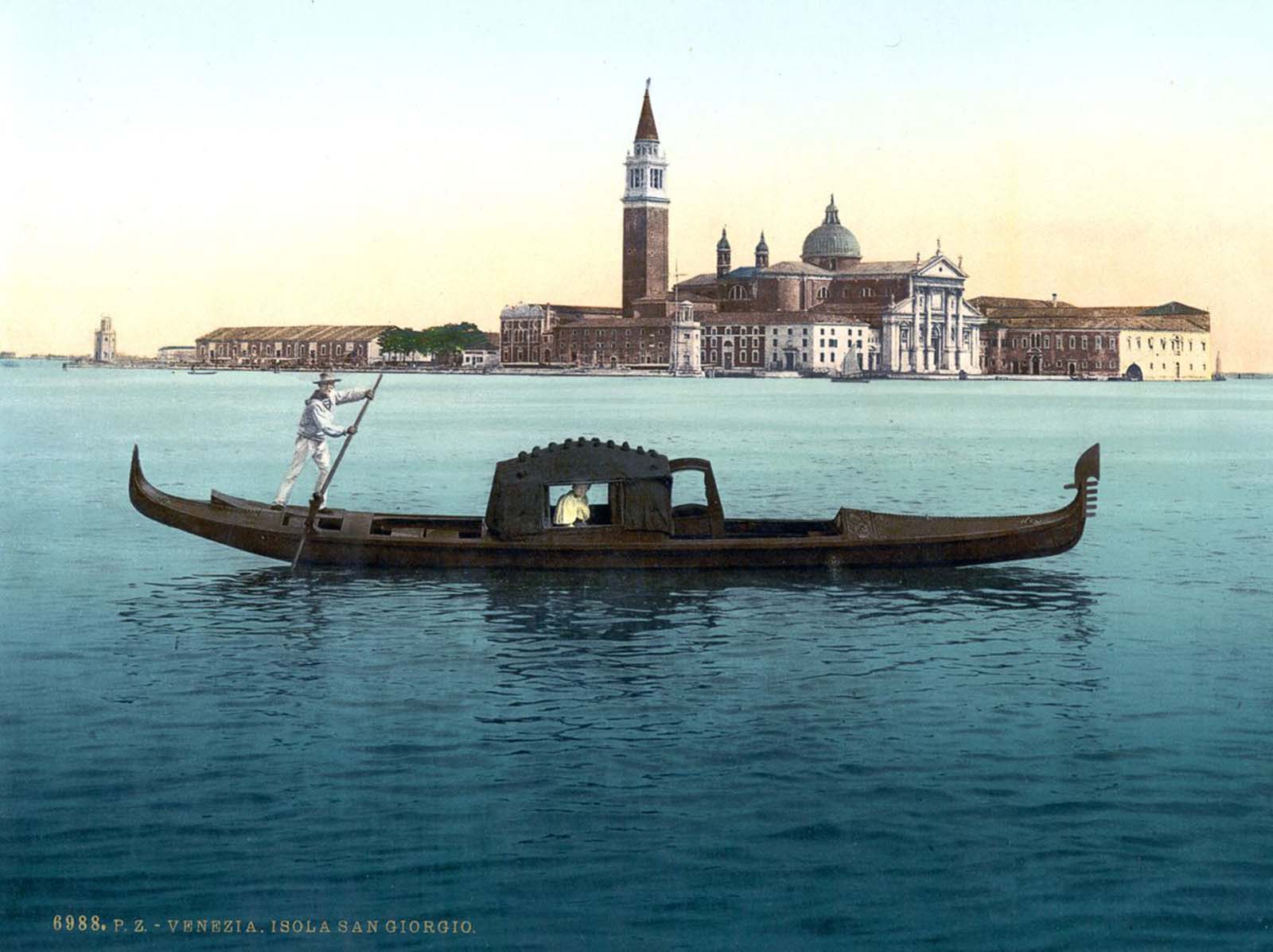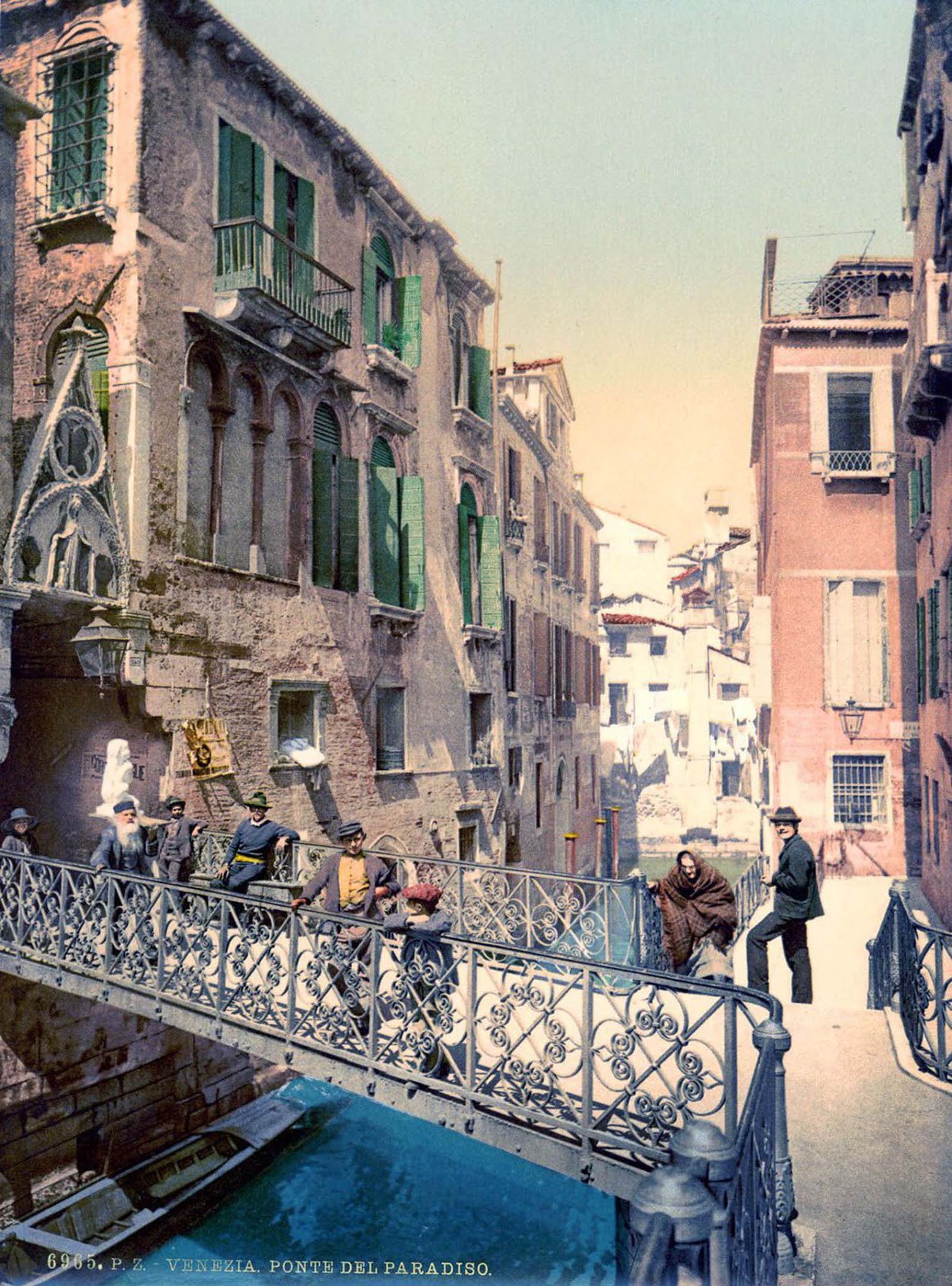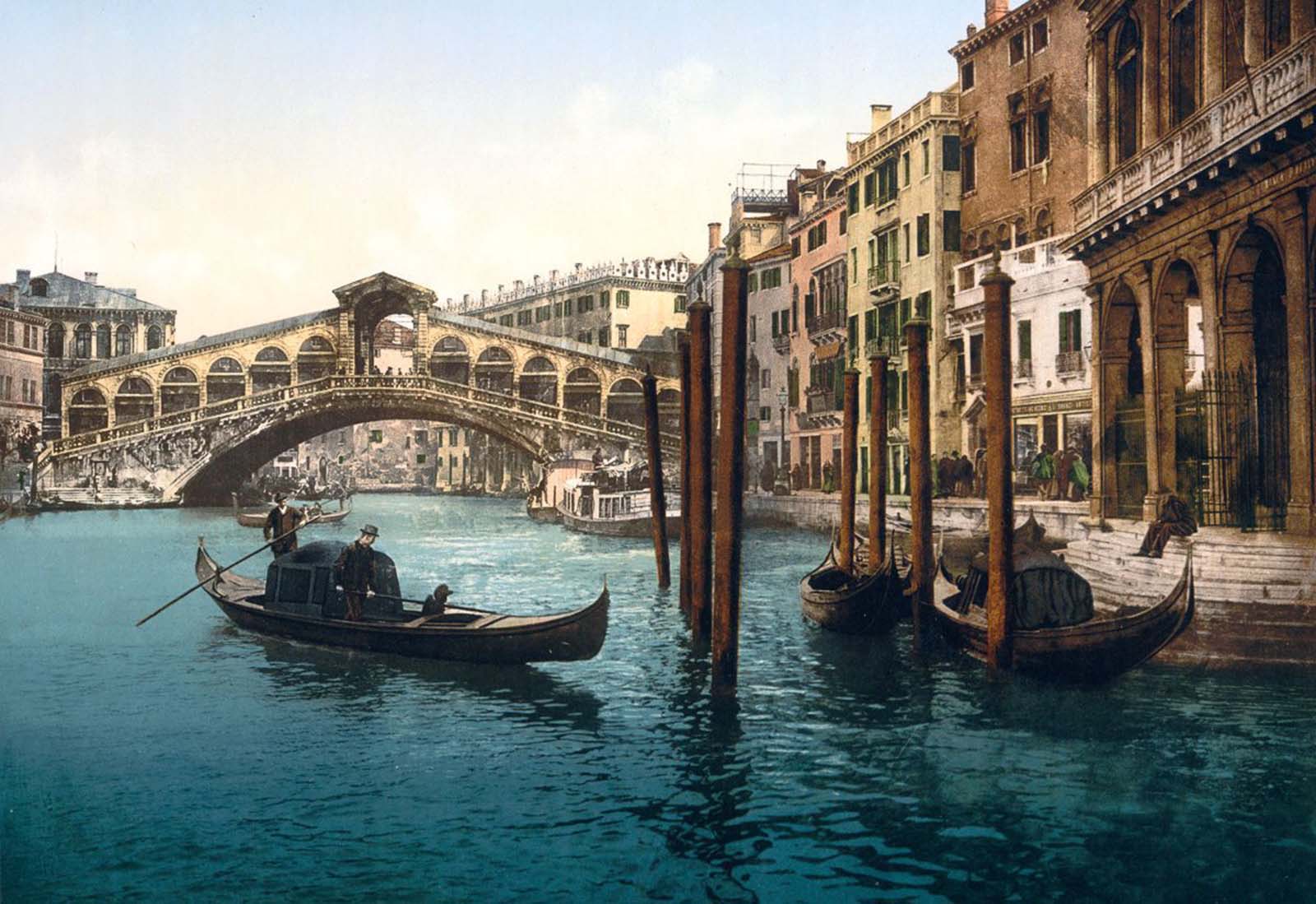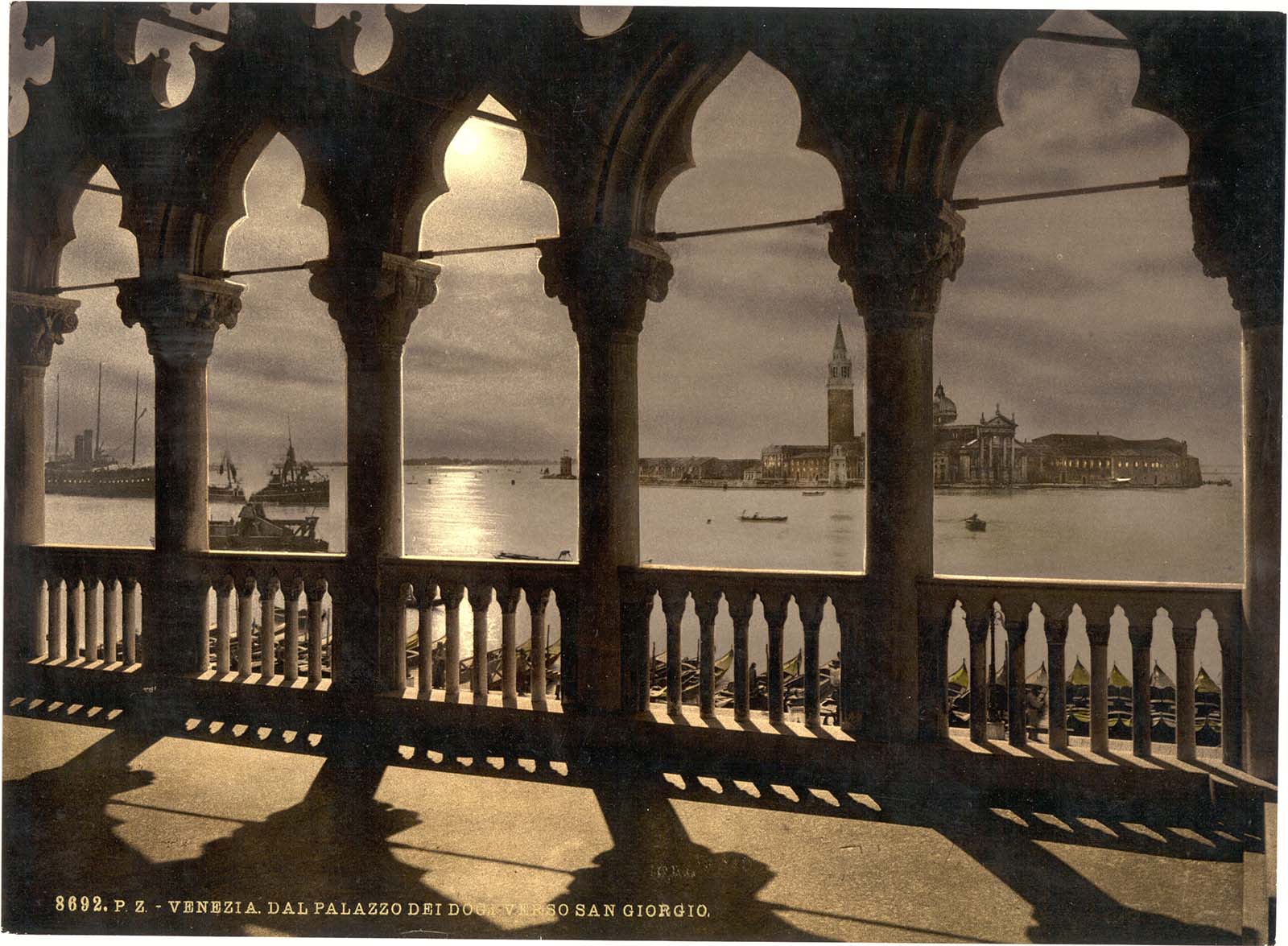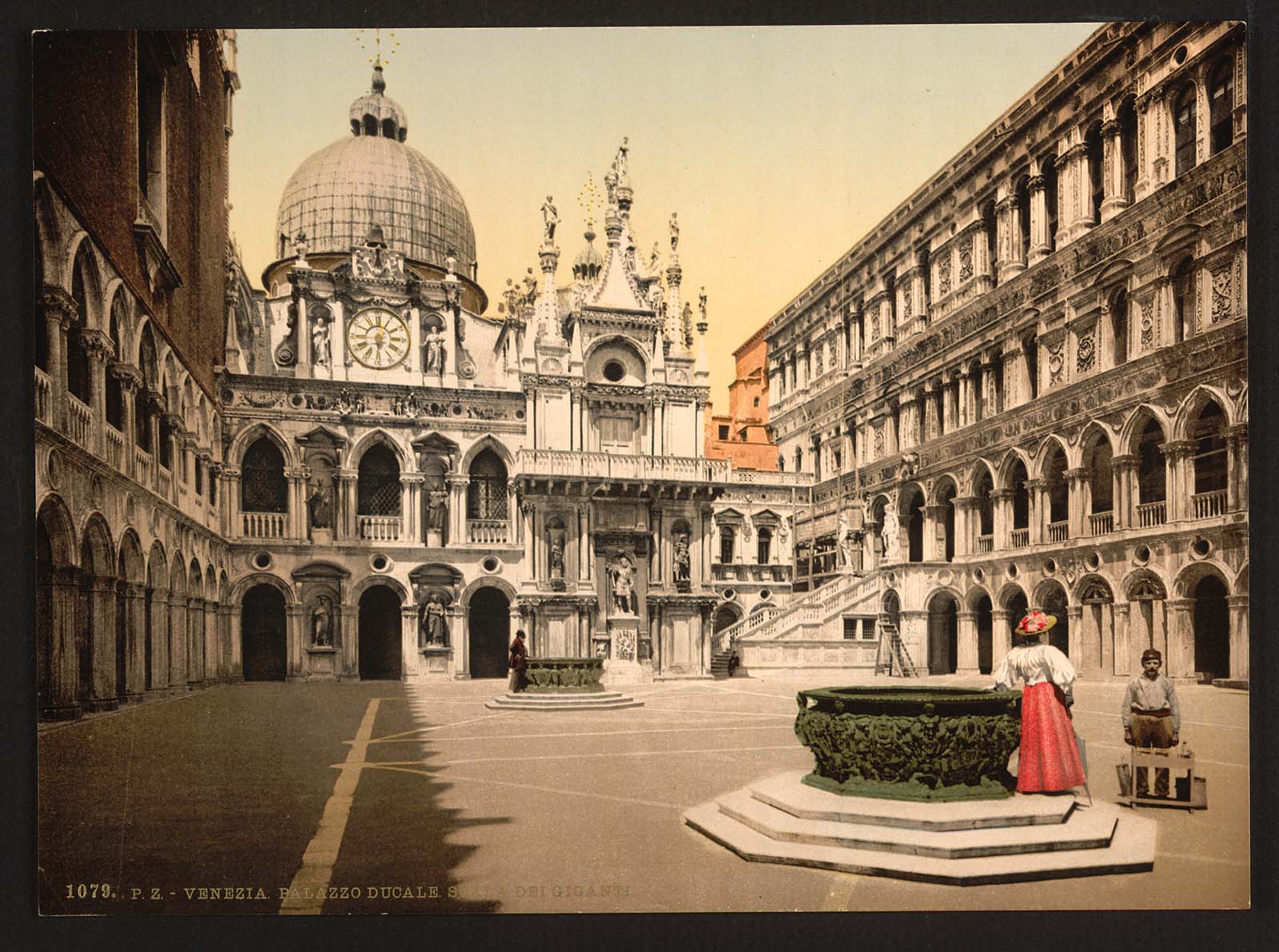The photocrom’s inventor Hans Jakob Schmid came up with the technique in the 1880s and it involves coating a tablet of lithographic limestone with a light-sensitive emulsion, then exposing it to sunlight under a photo negative for up to several hours. While Photocrom prints may look an awful lot like color photographs, if you look at them through a magnifying glass and the small dots that comprise the ink-based photomechanical image are visible. The photomechanical process permitted mass production of the vivid color prints, each color requiring “a separate asphalt-coated lithographic stone, usually a minimum of six stones and often more than ten stones” (one stone = 6.3kg). The photochrom technology has given us, among other striking pieces of visual history, these lush images of Venice, which the writer of place Jan Morris once described as “less a city than an experience.” The construction of Venice started in the 5th century AD after the fall of the Roman Empire when refugees from the mainland fled to the islands in the lagoon. Soon, there were so many of them that they needed more space, so they drove wooden poles deep into the clay beneath the ground. On top of the wooden poles, they built wooden platforms, and then on top of that, they constructed their buildings—all of which means that Venice is basically built on wood and water. The wood has miraculously avoided decay over the centuries since it’s underwater and not exposed to oxygen, and also because the saltwater has hardened the wood into a more durable stone-like consistency. Venice has been known as “La Dominante”, “La Serenissima”, “Queen of the Adriatic”, “City of Water”, “City of Masks”, “City of Bridges”, “The Floating City”, and “City of Canals”. The lagoon and a part of the city are listed as a UNESCO World Heritage Site. Parts of Venice are renowned for the beauty of their settings, architecture, and artwork. Venice is known for several important artistic movements—especially during the Renaissance period—has played an important role in the history of symphonic and operatic music, and is the birthplace of Antonio Vivaldi. (Photo credit: Library of Congress). Notify me of new posts by email.
Δ Subscribe

